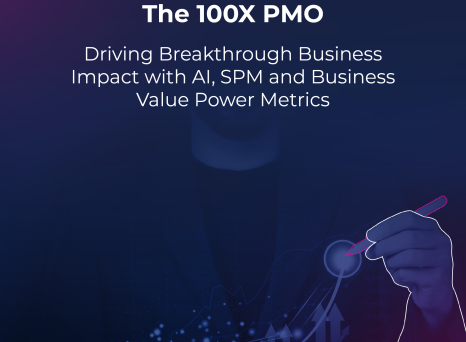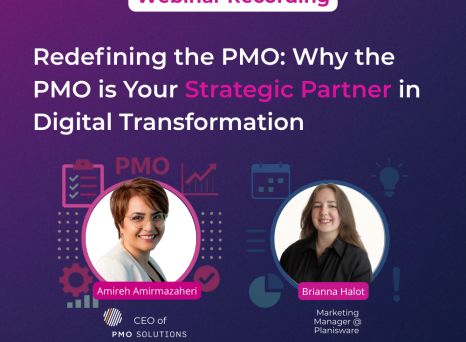Project management used to function like the person in the passenger seat of your car in charge of directions. They would know where you’re heading, how you want to get there, and how long it should take.
Project management used to function like the person in the passenger seat of your car in charge of directions. They would know where you’re heading, how you want to get there, and how long it should take. If you ran into any roadworks or accidents, they could use their map to redirect you or even a little intuition to find you a shortcut. But they would rarely be able to calculate how it would impact your time of arrival or fuel costs.
Project, program, or portfolio management offices (PMOs) then became tasked with functioning like Google Maps. Based on data, often real-time, it can provide your route and estimated arrival time. It can also suggest routes that save fuel, re-route you away from roadworks or accidents, and visualize the optimal times to avoid traffic.
Now, we’re pushing into a new era of AI, where the PMO is expected to act as a virtual assistant. By analyzing data and building algorithms, the hope is that they can now accurately predict which destination to go to in the first place, which mode of transport to use, and how much you’ll enjoy yourself when you get there.
Predicting Project Value
If you consistently prioritize data collection and analysis throughout several projects, you can start to predict the outcome of future potential projects for your organization. This paves the way for comparing the strategic value of different types of projects—a hugely valuable capability for effective decision-making.
PMOs need a robust foundation of data skills to clean, analyze, and create algorithms from their data. Thankfully, project management tools are evolving to assist. Some even offer AI-powered features that help assess risk and predict outcomes before they begin.
How can PMOs ensure data quality and usability?
Companies see an 8% increase in revenues and profits when they become data-driven, but data quality and usability are necessary for PMOs to reap the full rewards for their organization. Data quality primarily relies on collection standards, which PMOs can ensure through the proper governance and tools. Here are the tactics recommended for PMOs to drive data quality and harness the full potential of their organization’s data:
Emphasize Ownership and Urgency
Project managers (PMs) should take ownership of the data relevant to and produced by their projects.
You can also add a sense of urgency to the drive to take up data ownership. They emphasize that high-quality data facilitates agility. If data is continuously reviewed by PMOs, even minor disruptions to scope, timeline, and costs can be identified and flagged early. And data from previous projects can inform the action required to course-correct. Ultimately, they underline that this can directly contribute to maintaining or gaining a competitive advantage.
Encourage Healthy Competition
Companies can take a novel approach to ensuring data quality: using game mechanics. Incentivized competition can encourage PMs to focus on how they collect and input data to improve the overall quality of their project data.
89% of employees report feeling competitive and eager to complete a task when it’s gamified. If you want to improve something as valuable to your PMO as data quality, consider how to make its associated tasks more fun or immediately rewarding.
Invest in Upskilling
Not every PMO will be proficient in data governance and visualization. But yours should be if you want to make the most of your data.
“PMOs used to be an Excel addict, then they became an application addict, and now… they integrate data management into their day-to-day operation.”
Invest in upskilling your PMO’s data capabilities. This may mean hiring data analysts to transform your data into actionable insights. These skill sets are new and hard-learned. To use them fast, you’ll need fresh minds in your team. But data skills aren’t all you’re looking for, as Nadia pointed out,
“We need people that are structured and logical, but really, we want them to get outside of the PMO world and understand what’s happening in the business.”
PMO teams that will get out from behind their laptops to develop their business acumen will be the best at maximizing their use of data for the organization.


